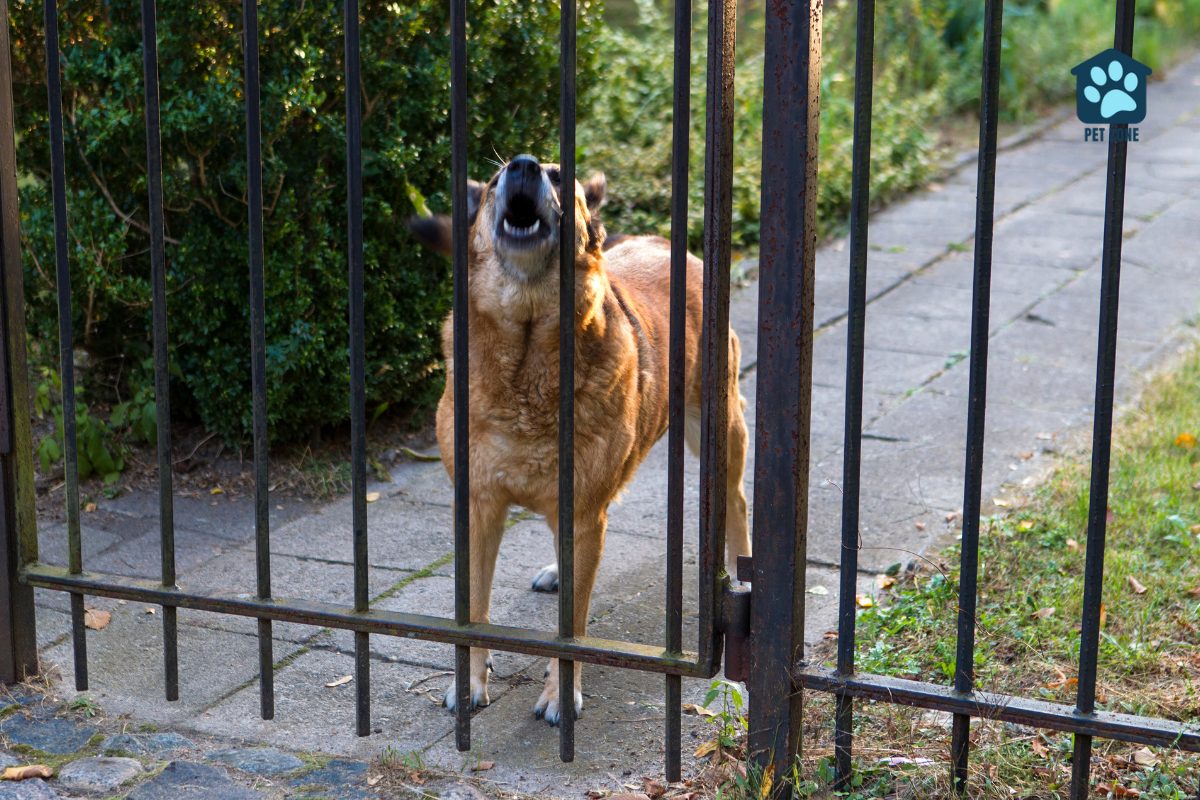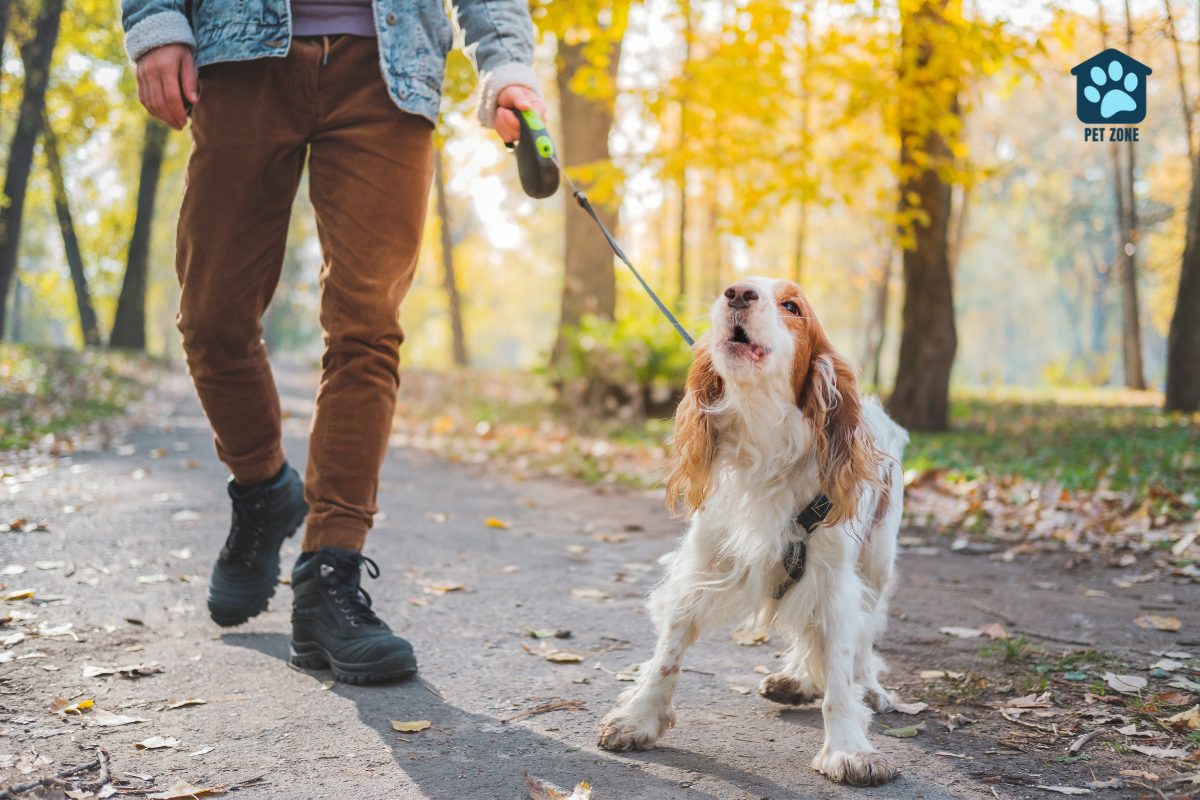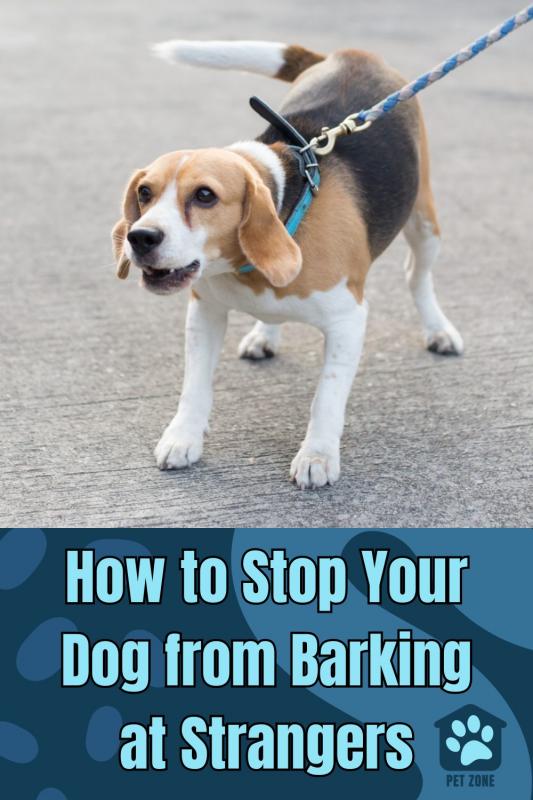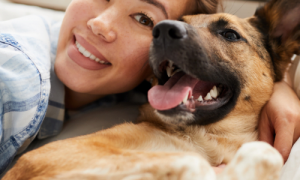Estimated reading time: 9 minutes
You’re out for a walk with your dog, and the moment they spot a stranger, the barking begins. It’s loud, it’s persistent, and you can feel eyes on you as passersby give sideways glances.
You love your furry friend but are at your wits’ end trying to keep him quiet around new people. Sound familiar? If so, you’re not alone in this challenge that many pet owners face.
It turns out that shouting ‘Quiet!’ at your pup may actually make things worse; they might just think you’re joining in! So how do you help Fido understand when it’s time to be silent? This article is packed with techniques designed to teach your dog how to remain calm and collected in the presence of strangers.
From understanding why dogs bark to training methods that work, we’ve got actionable advice ready for you and your canine companion. Ready for some peace and quiet? Let’s dive into turning those barks into hushes!
Key Takeaways
- Dogs bark at strangers due to territorial behavior, excitement or fear, and lack of socialization. Understanding the underlying cause is essential in addressing the behavior effectively.
- Use training techniques such as the Quiet Command Method, distraction and positive reinforcement, and desensitization practices to reduce your dog’s barking at strangers.
- Manage your dog’s environment by reducing exposure to triggers, creating a calm setting at home, and seeking professional help from a certified dog trainer if needed.
- By applying these strategies consistently, you can create a more peaceful environment for both you and your pet while building trust between your dog and strangers.
Understanding Why Dogs Bark at Strangers

Territorial Barking
Territorial barking is like your dog saying, “Hey, this is my place!” When someone new comes to their space, they bark a lot. They want to tell others that a visitor has arrived or they might try to make the stranger go away.
It’s important for dogs to learn when it’s okay and not okay to bark at people coming into their home or yard.
To get your dog to stop this type of barking takes work. You have to show them there’s no need to be the guard all the time. Give them lots of good words and treats when they stay quiet as someone walks by.
Keep doing this so they understand being calm around strangers gets them nice things. This way, you help your friend feel safe without needing to bark at every person they see.
Excitement or Fear
After looking at why dogs protect their space, now think about how they feel when they meet strangers. Puppies often bark because they are excited to see new people. They don’t know how to show this feeling without making noise.
Older dogs might bark too if they get thrilled or scared by someone they don’t know.
Fear can make a dog bark as well. If your dog feels anxious or nervous around new faces, it may start barking. This is their way of saying “I’m scared!” It’s important for you to help them learn that strangers aren’t always bad and teach them to trust new people more.
With patience and the right training, you can keep your dog calm around others and stop the fear barking.
Lack of Socialization
Just like fear can make a dog bark, not being around enough people or other dogs can do the same. Dogs need to learn about different sights, sounds, and smells when they’re young. This helps them know what’s normal and what might be a threat.
If pups don’t get this chance to learn, they may see anyone new as scary or bad. This is why your dog might start barking at someone they don’t know.
Teach your dog that strangers aren’t always trouble by introducing them slowly to new folks and pups in safe places. Lots of positive experiences with different people will help them feel less scared.
Over time, your pup can become more friendly and quiet when meeting strangers rather than barking out of fear or worry because they’re unsure who’s approaching their space.
Training Techniques to Stop Your Dog From Barking at Strangers
The Quiet Command Method
To stop a dog from barking at strangers, the Quiet Command Method is an effective technique. Here’s how you can use this method to train your pet:
- Teach your dog the “Quiet” command by using a calm, firm voice when they bark excessively.
- Ensure to praise and reward your dog immediately when they stop barking after being given the “Quiet” command.
- Consistency is key, so practice the Quiet Command Method regularly to reinforce the behavior.
- Avoid yelling at your dog to be quiet, as it can escalate their barking behavior.
- It’s crucial to remain patient and persistent while training your dog with the Quiet Command Method.
Distraction and Positive Reinforcement
After introducing the quiet command method, now let’s focus on using distraction and positive reinforcement to reduce your dog’s barking at strangers. Here are some effective techniques:
- Use distraction techniques such as shaking car keys or squeaking a favorite toy to divert your dog’s attention away from the trigger that causes barking.
- Employ positive reinforcement by rewarding your dog’s quiet and well – behaved behavior with treats, praise, or toys. This encourages the desired behavior while discouraging excessive barking.
- Train your dog to cease barking on command using lure reward techniques, where you use treats to guide your dog into a quiet state and reward them when they comply.
- Ensure not to reward barking in order to avoid reinforcing the behavior that leads to excessive barking at strangers.
- Remember that positive reinforcement methods can effectively train your dog to stop barking by consistently rewarding quiet and well-behaved behavior.
Desensitization Practices
To reduce your dog’s barking at strangers, you can use desensitization techniques. Here is a detailed list to help you:
- Start by identifying the triggers that cause your dog to bark at strangers, such as doorbells, delivery people, or unfamiliar sounds.
- Once you have identified the triggers, expose your dog to these stimuli in a controlled and gradual manner to help them become desensitized.
- Use positive reinforcement, such as treats or praise, to associate the presence of strangers with something positive in your dog’s mind.
- Gradually increase the exposure to the triggers while ensuring that your dog remains calm and relaxed during the process.
- Create a calm and controlled environment during desensitization exercises to help your dog feel safe and secure.
- Consistently practice these desensitization techniques to allow your dog to learn new associations with encountering strangers without feeling the need to bark.

Managing Your Dog’s Environment
Create a calm and controlled setting at home to reduce your dog’s exposure to triggers. This can help minimize barking behavior and create a more peaceful environment for both you and your pet.
To learn more about managing your dog’s environment, continue reading the full article for actionable guidance on stopping your dog from barking at strangers.
Reducing Exposure to Triggers
To reduce your dog’s barking at strangers, you can try these techniques:
- Keep curtains or blinds closed to limit your dog’s view of outside triggers. This helps reduce their impulse to bark.
- Create a calm and controlled setting by minimizing noise and commotion around the house. Dogs are less likely to bark in a peaceful environment.
- Take your dog on walks in quieter areas where they are less likely to encounter unfamiliar people, reducing the chances of barking.
- When someone comes over, create a distraction for your dog, such as giving them a puzzle toy with treats inside, to divert their attention away from the visitor.
- Teach your dog a “quiet” command so that you can prompt them to stop barking when they begin. This reinforces good behavior and reduces excessive barking.
Creating a Calm and Controlled Setting
After reducing your dog’s exposure to triggers, the next step is creating a calm and controlled setting at home. Removing your dog from triggering situations or closing blinds and curtains can help control their barking at strangers.
By providing a more serene environment, you can gradually desensitize your dog to the triggers. This will help them learn to be calm around new people and animals in a comfortable setting within your home.
Socialization and habituation play an essential role in preventing barking problems, as it helps dogs get used to new situations, people, and noises. Helping your dog feel safe and secure in their surroundings is crucial for teaching them not to bark at strangers.
Seeking Professional Help
Consulting a certified dog trainer can provide tailored guidance and support to address your dog’s barking behavior. To learn more about effective training techniques and managing your dog’s environment, continue reading our blog for valuable insights and practical tips.
When to Consult a Certified Dog Trainer
If you’re struggling to control your dog’s barking, especially when it reacts aggressively to strangers, consulting a Certified Professional Dog Trainer is crucial. Seeking help from a certified professional can effectively address excessive barking and reactive behavior towards strangers or other dogs.
If you believe your dog’s barking is causing distress or if it exhibits signs of aggression towards family members or unfamiliar individuals, seeking assistance from a certified professional trainer is highly recommended.

Conclusion
By understanding why your dog barks at strangers and applying the dog training techniques discussed, you can effectively address this behavior. The practical tips provided are easy to implement and have been shown to be efficient in reducing your dog’s barking.
By employing these strategies, you can create a calm and controlled environment for your pet, leading to significant improvements in their behavior around strangers. For further guidance, consider seeking help from a certified dog trainer who can provide additional personalized assistance tailored to your dog’s specific needs.
Take action today to build trust between your dog and strangers, fostering a healthier and more positive interaction for everyone involved.
As an Amazon Associate I earn from qualifying purchases.










Great informative article!!
This is just what I needed to help train my older pup. He can make it very difficult to take places because he is so vocal towards strangers. Being a very large, black German Shepard, he really frightens people. Now, I feel well prepared to train him for an easier time. Thanks!!
So much to understand about dogs’ behavior. Thanks for always explaining everything so well. This topic of my dog barking at strangers is something I’ve needed to address for sometime now!
I’ll be sharing this with some of my friends! It’s more than just reprehend them, great article.
I totally agree that territorial instincts are very high in dogs and it’s their primary mode of response when they encounter a stranger in the area. Awesome read!
I’m so glad we trained the quiet command early on. Our dog still reacts to strangers coming too close, but he is very easy to control using this command. It absolutely works, but was a lot of work to train.
Thank you for sharing!
This is super helpful! My friends have dogs that bark a lot and these tips would be super helpful for them.